

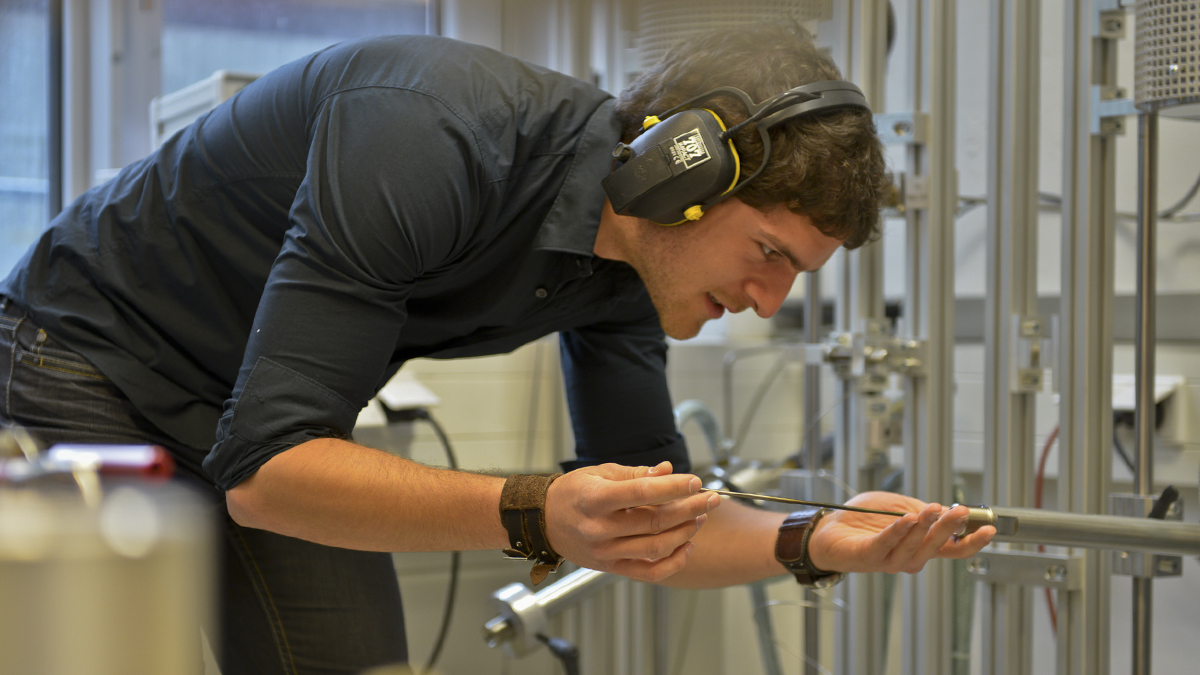
The working group focuses on the investigation of high-temperature processes in geosciences and materials science. An important topic is the determination of the properties of magmatic systems with the general aim of understanding the formation and differentiation of the continental and oceanic crust. Furthermore, we are investigating the distribution of metals between fluids, melts and minerals in several projects. These data are crucial for understanding the formation of ore deposits.
Research subject and approach
A central aspect of our work is the experimental simulation of geological processes occuring at great depths. In our ‘high-pressure laboratory’ equipped with various facilities, we carry out experiments up to a maximum pressure of 500 MPa (corresponding to a depth of around 20 km) and at temperatures of up to 1300 °C. The group in Hannover has gained an international reputation with its high-pressure applications, which are continuously under further development and improvement. These facilities, supplemented by micro-analytical methods such as an electron microprobe and a scanning electron microscope, are used to simulate processes in the magma chambers of volcanoes and high-temperature reactions in the Earth's crust.
The electron microprobe (EPMA) can be used to analyse smallest areas of solid samples (predominantly minerals and glasses in the working group) non-destructively and quantitatively. As the spatial resolution of the analyses reaches around 1 µm, the chemical composition of mineral grains of just a few micrometres in size can be determined in-situ (i.e. in the rock assemblage) with a high degree of accuracy. In addition to rock samples, even the smallest glass particles can be analysed.
The combination of experiments and high-resolution analysis can be used to calibrate so-called geothermobarometers, thermodynamic models and geochronometers. For example, geothermobarometry uses mineral phases and their chemical composition to reconstruct the conditions in magma reservoirs under active volcanoes (including the temperature and depth of the magma chamber). Geochronometry is based on the diffusion rate of elements in minerals and is used to determine the time scales of geological processes (e.g. the residence time of magmas at depth before eruption). In materials science, research is primarily focussing on the physical and chemical properties of glasses, melts and minerals.
Formation of ore deposits


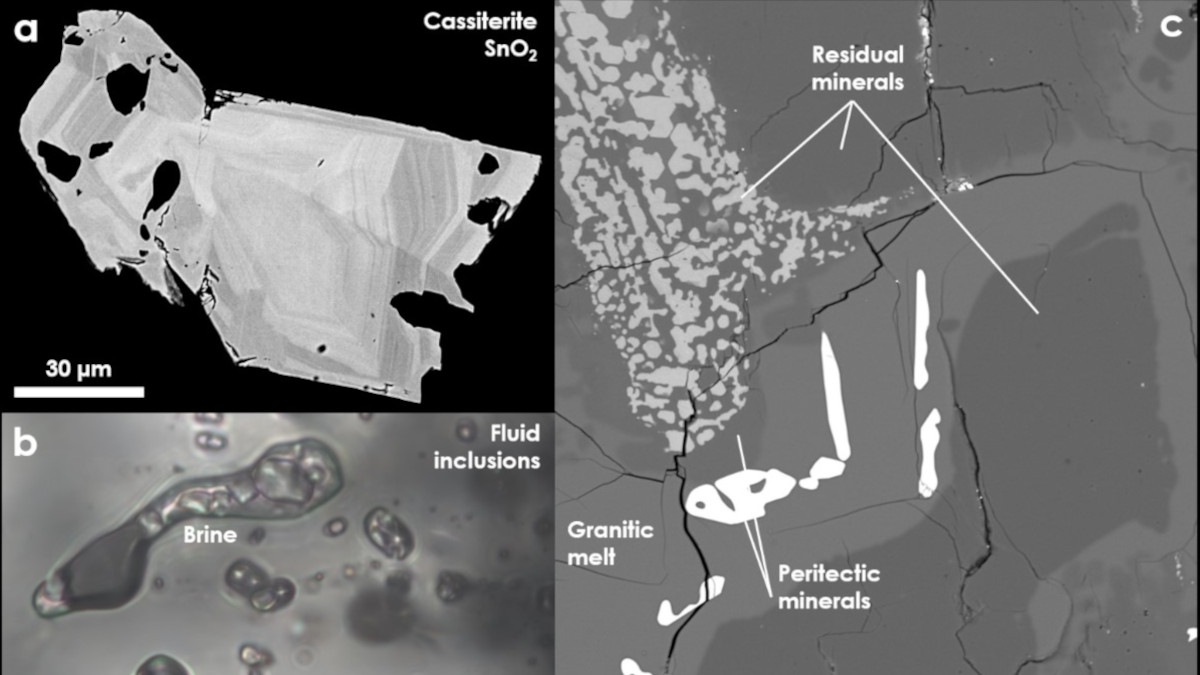
Rare metals are essential ingredients to power the technological transition to a green, low-energy, low-carbon-based society. The rising global demand for these elements cannot be met by recycling alone and requires a mining inventory of existing assets and the discovery of economic ore bodies. Ore deposit formation results from the conjunction of a wide range of processes and intensive parameters and from the relative involvement of different media (melt, minerals, fluids). This complexity is reflected in natural rocks, where the reconstruction of the evolution of a single deposit can be challenging. As a support to field-based studies, experimental petrology allows to simulate natural processes at conditions relevant for natural systems. In addition, the role of a single parameter (e.g. P, T, fO2, t) or process (e.g. melting, crystallization, fluid circulation) can be quantified precisely allowing the production of important datasets (e.g. partition coefficients, solubility data, factors of enrichment) to better understand ore deposits and possibly predict their occurrences in natural settings. Ongoing research projects focus on understanding metal enrichment processes in: (i) layered intrusions (e.g. Fe, V, PGEs) and (ii) magmatic-hydrothermal deposits (e.g. Li-Sn-Nb-Ta-W).
Analysis of ICDP–IODP drill core samples
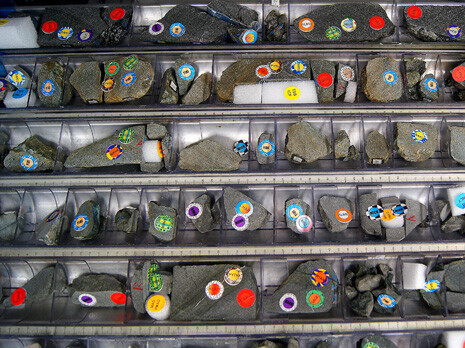
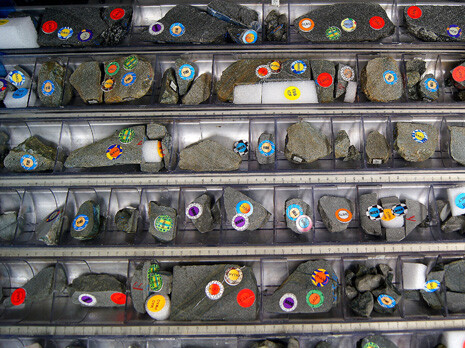
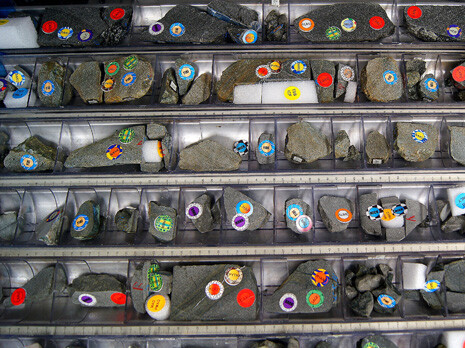
Our working group actively contributes to the study of drill core samples obtained through the International Ocean Discovery Program (IODP) and the International Continental Scientific Drilling Program (ICDP). These internationally coordinated drilling projects provide unique access to deep-seated geological records, enabling high-resolution investigations of magmatic, metamorphic, and sedimentary processes. In collaboration with international research teams, we have explored various geological settings ranging from oceanic plateaus and massifs (e.g. Shatsky Rise and Atlantis Massif, mid-ocean ridges (e.g. Southwest Indian Ridge and East Pacific Rise), ophiolites (e.g. Oman), large igneous complexes (e.g. Bushveld), volcanic arcs (Izu-Bonin-Mariana) and continental hotspots (e.g. Yellowstone). To unravel the mineralogical and geochemical complexities of core samples from such localities, we employ cutting-edge analytical techniques, such as EPMA, FTIR or Raman spectroscopy, and combine these with experimental investigations and geochemical modelling. This approach ultimately allows us to provide a comprehensive understanding of the processes shaping Earth's lithosphere.
Generation and development of magmatic systems

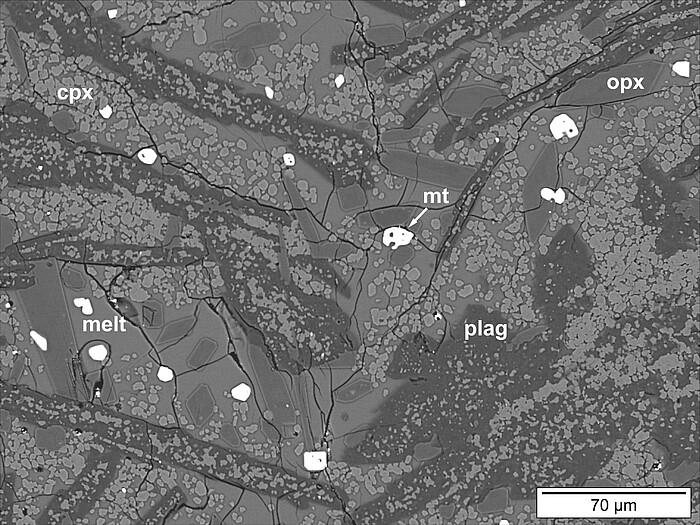
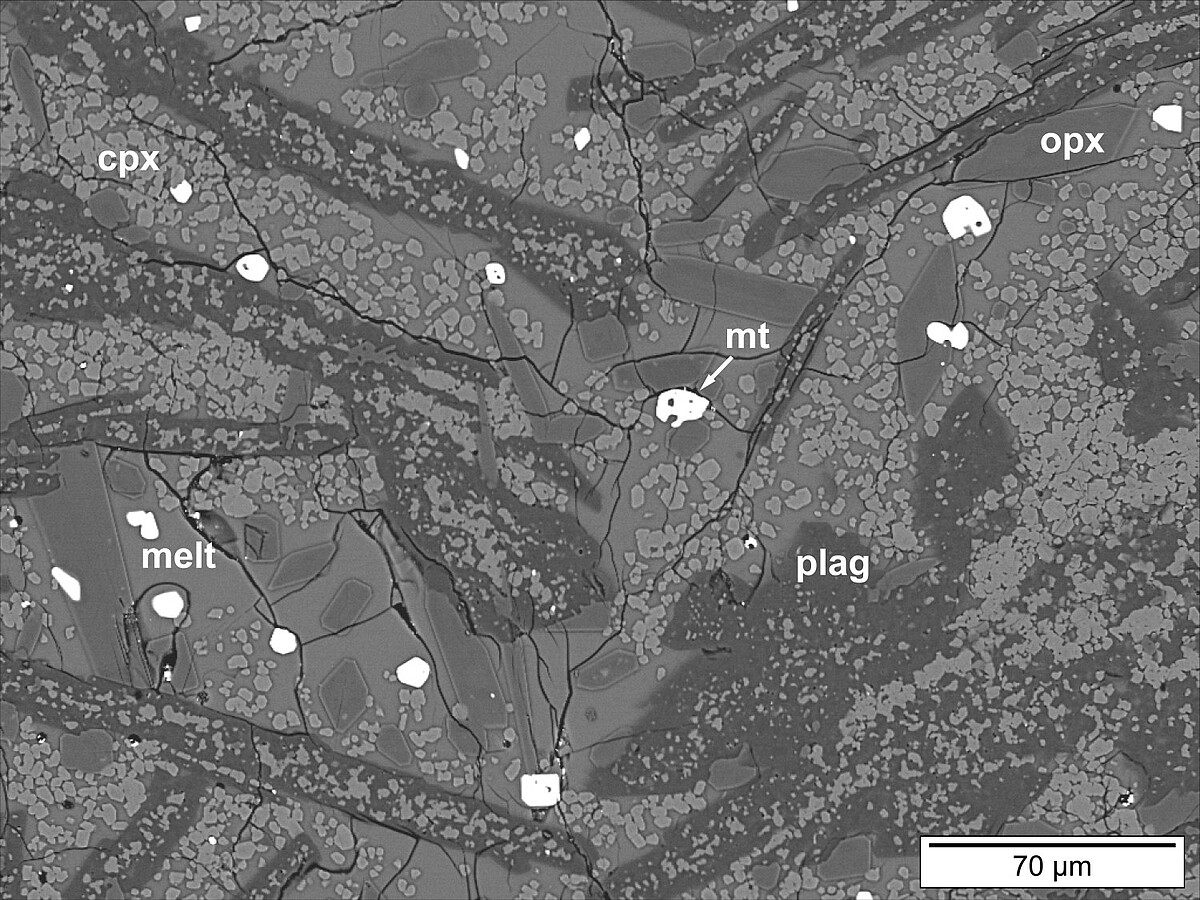 ©
Felix Marxer
©
Felix Marxer
A detailed investigation of the processes that lead to the generation and development of magmas is essential to better understand active volcanoes. High-pressure experiments (in combination with high-resolution analysis) can provide valuable data for this purpose and enable the further development of existing petrological tools used for the reconstruction of magmatic processes (e.g. geothermobarometry, geochronometry, or thermodynamic models). In several research projects, we are experimentally investigating the systematic influences of various chemical and physical parameters (e.g. temperature, pressure, water content, and chemical composition) on phase relations and mineral stability fields for different magmatic systems (e.g. ranging from submarine mid-ocean ridges to subduction zone volcanoes). Furthermore, several ongoing research projects are dealing in detail with individual active volcanoes (e.g. located in Kamchatka, Chile, or the Eifel) in order to better understand pre-eruptive magma storage conditions and, potentially, be able to make any statements regarding their (future) eruption dynamics.
Development of analytical and experimental methods
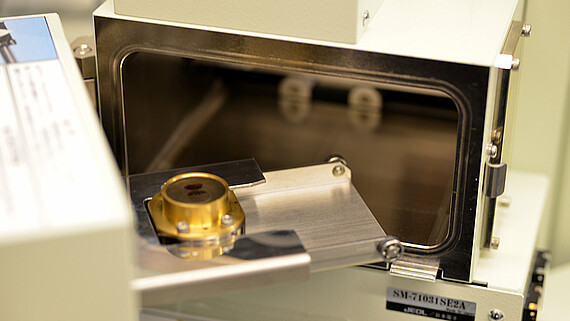
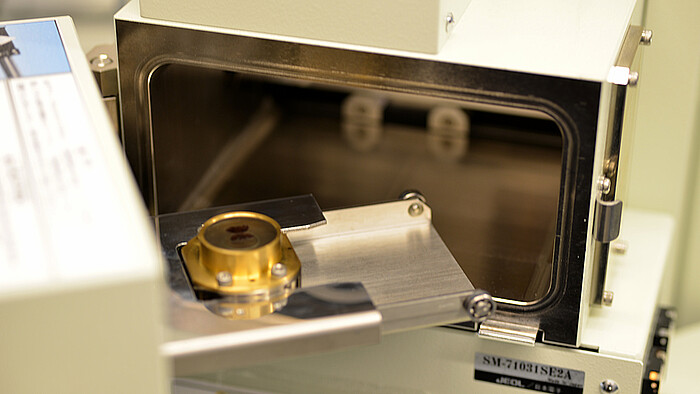
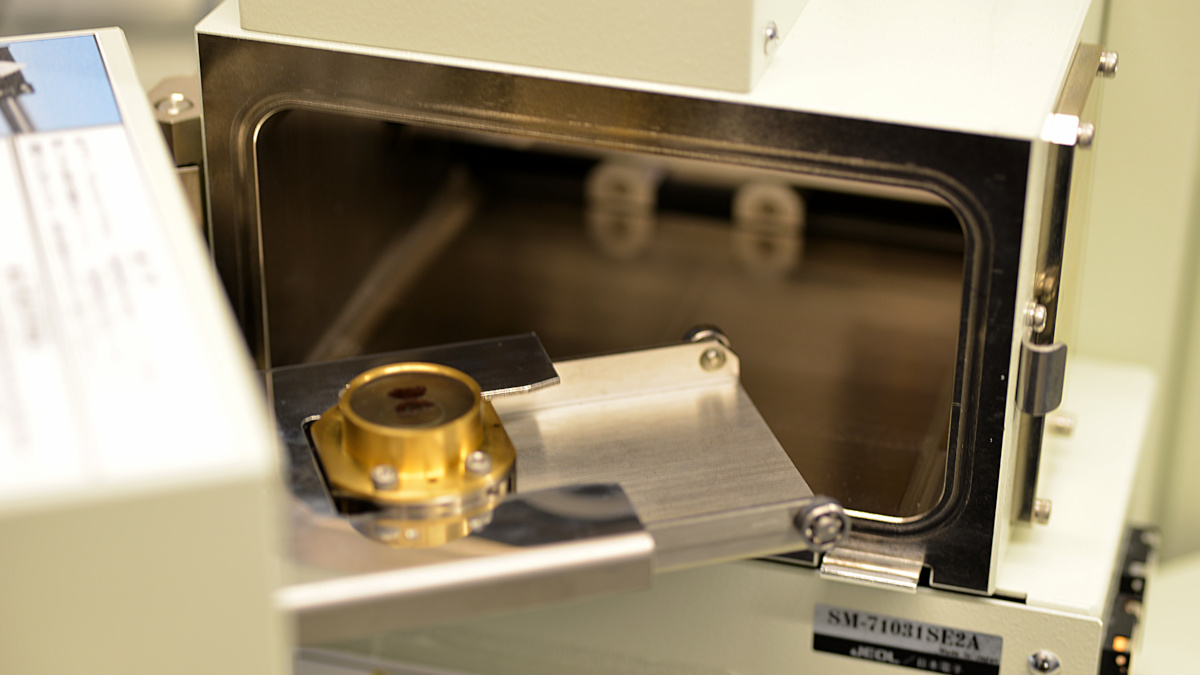
In our research, we focus on developing and improving innovative analytical and experimental methods for petrological and mineralogical investigations. Analytical techniques we are primarily working on include electron probe microanalysis (EPMA), Fourier Transform Infrared Spectroscopy (FTIR), micro-Raman spectroscopy, as well as wet chemistry colorimetric and titration methods. In one of our current projects, we are further improving the EPMA "flank method" allowing us to obtain high-resolution and high-quality data of ferric-ferrous ratios in mineral and glass samples. Moreover, we are continuously working on refurbishing our experimental facilities, for example to improve the control and monitoring of run conditions and develop new ground-breaking experimental approaches. Our experimental lab plays a crucial role for the synthesis of various glass and mineral standards for use in Raman and EPMA analysis. Additionally, we are integrating deep learning techniques in our approaches to enhance the processing of large datasets obtained with our analytical and experimental facilities.
Head of group


30167 Hannover




